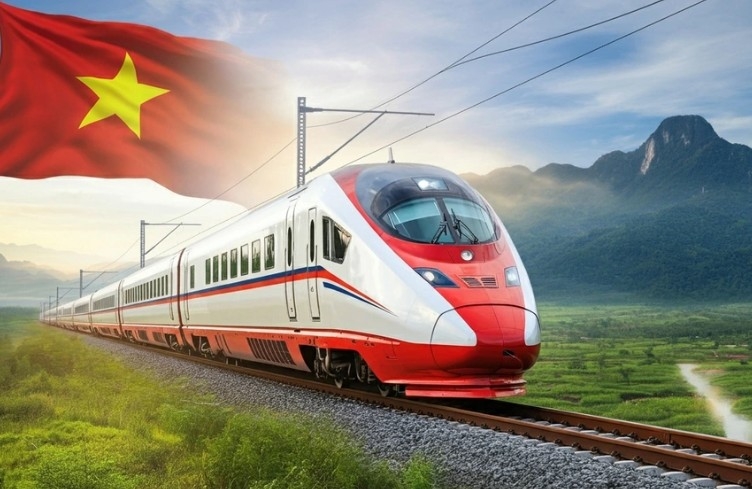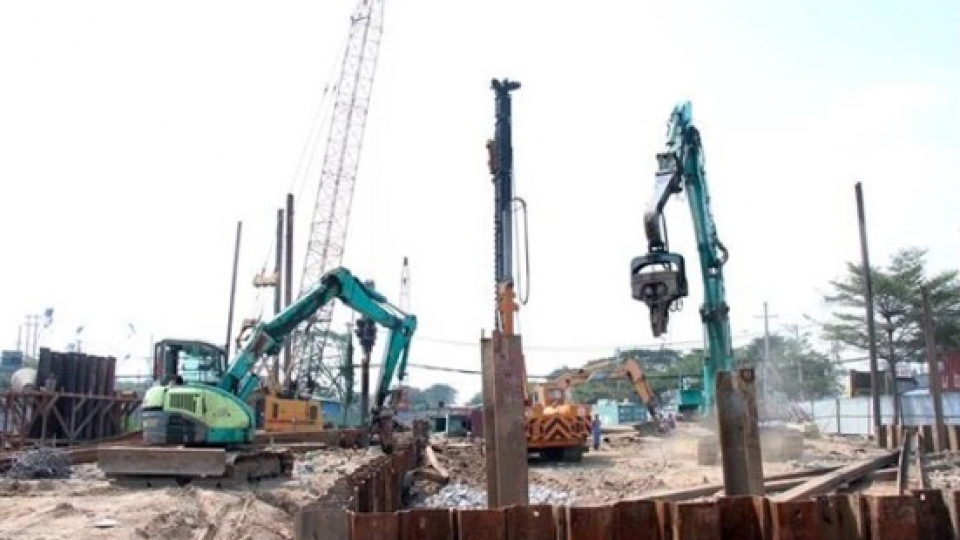North–South high-speed railway drives forward Vietnam's infrastructure development goals
VOV.VN - The proposal to adopt special mechanisms allowing Vietnamese enterprises to participate in the North–South high-speed railway project is seen as essential to promoting technological self-reliance and enabling domestic mastery of high-speed rail systems.

The North–South high-speed railway project is considered a national flagship initiative, marked by an unprecedented scale of investment and technical requirements in Vietnam. The estimated total investment stands at US$67.34 billion, with construction alone accounting for roughly US$33.5 billion. The project not only raises high expectations for infrastructure development but also presents both opportunities and challenges for Vietnamese businesses.
According to Chu Van Tuan, Deputy Director of the Railway Project Management Board under the Ministry of Construction, given the project’s scale and complex technical demands, proper division of work packages is key to ensuring effective implementation.
Proposed special policy mechanisms
Seeing the substantial construction value of the project as a significant opportunity for Vietnamese contractors, the Vietnam Association of Construction Contractors (VACC) has submitted a proposal to the Prime Minister recommending a series of special mechanisms.
Particularly focused on contractor selection, VACC suggests allowing direct contractor appointments for certain packages and applying a 5% pricing advantage.
For contractor experience, VACC proposes selecting domestic contractors with a track record in projects of similar classification (as defined in Circular No. 06/2021 of the Ministry of Construction), or those with experience in at least three projects one level below, which can be deemed equivalent.
On financial capacity, the association recommends permitting financial strength to be combined across all members in a joint venture, and allowing for relaxed financial thresholds.
Joint ventures led by domestic contractors, whether solely with local partners or including foreign firms, are encouraged. Additional points would be awarded to consortia where a higher proportion of work is handled by Vietnamese firms. Foreign contractors would be required to form joint ventures with local companies, which must take on at least 50% of the project workload. The use of Vietnamese workers, at least 70%, with preference for local labour, is also recommended.

As for consulting services, the project will apply the FEED (Front-End Engineering Design) model as stipulated in Vietnamese regulations. Given the limited capacity of domestic consultants, VACC proposes that firms involved in pre-feasibility and FEED phases be allowed to participate in EPC (Engineering, Procurement, and Construction) consortia, provided they demonstrate legal and financial independence from construction firms. Alternatively, EPC contractors could be permitted to select design consultants after being awarded the project.
In terms of supervision and technical standards, due to the high precision and minimal tolerance required, VACC recommends strengthening supervision through joint teams of international and domestic consultants. During construction, foreign contractors would be obliged to transfer execution technologies to their Vietnamese counterparts.
Despite existing challenges, the North–South high-speed railway offers a crucial opportunity to enhance domestic capabilities and elevate Vietnamese companies in the high-tech construction sector. With appropriate policies and mechanisms in place, the project could serve as a catalyst for the long-term growth of Vietnam’s transport sector and supporting industries.
In November 2024, the National Assembly approved the investment policy for the project, with a preliminary total cost of approximately VND1.7 quadrillion (around US$67 billion).
The 1,541-kilometre line will run from Ngoc Hoi Station in Hanoi to Thu Thiem Station in Ho Chi Minh City, traversing 20 provinces and municipalities.
The project will feature a newly built dual-gauge track (1,435 mm), designed for speeds of up to 350 km/h and axle loads of 22.5 tonnes. It will include 23 passenger stations and five cargo terminals, serving both passenger transport and freight needs when necessary, while also contributing to national defence and security.



